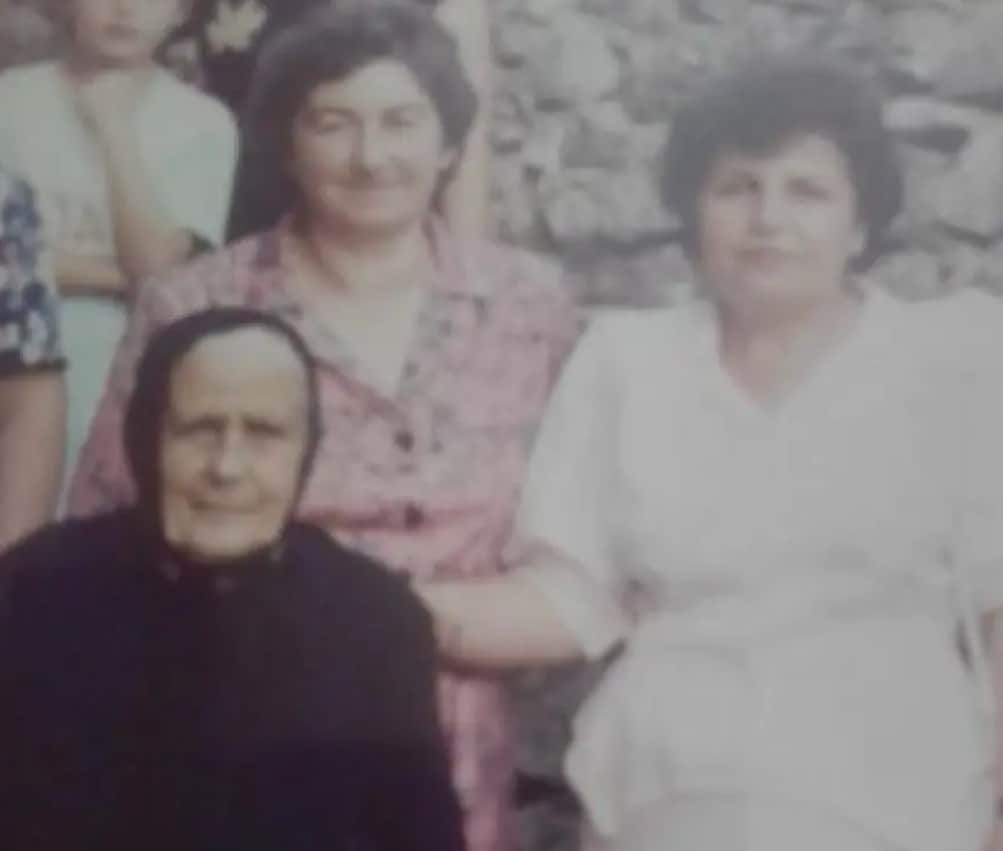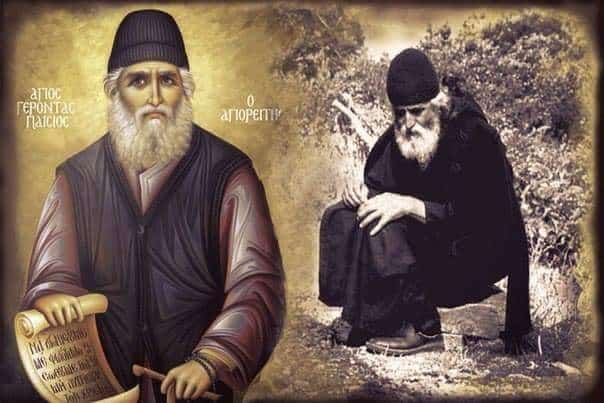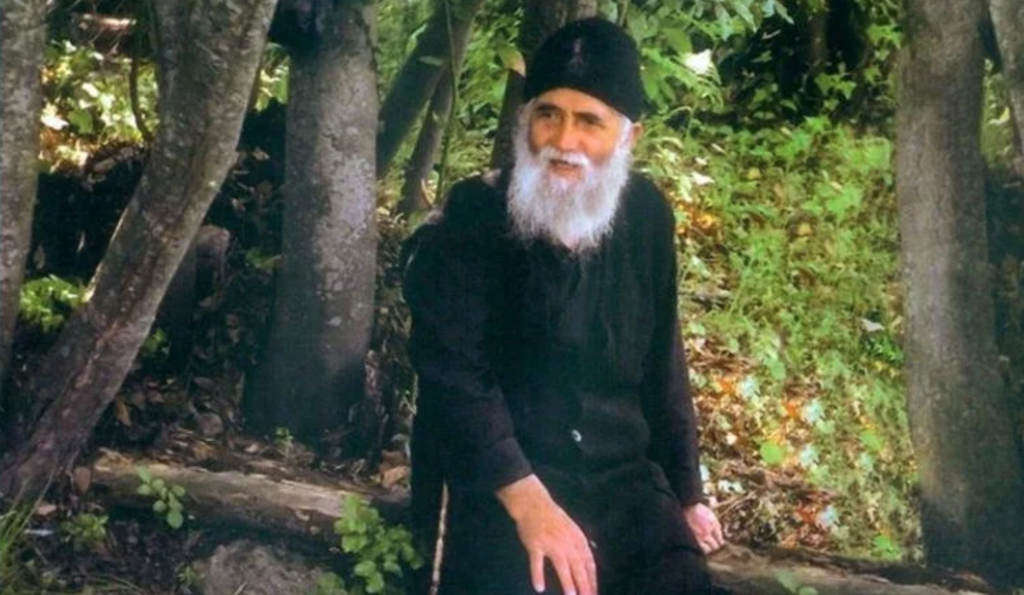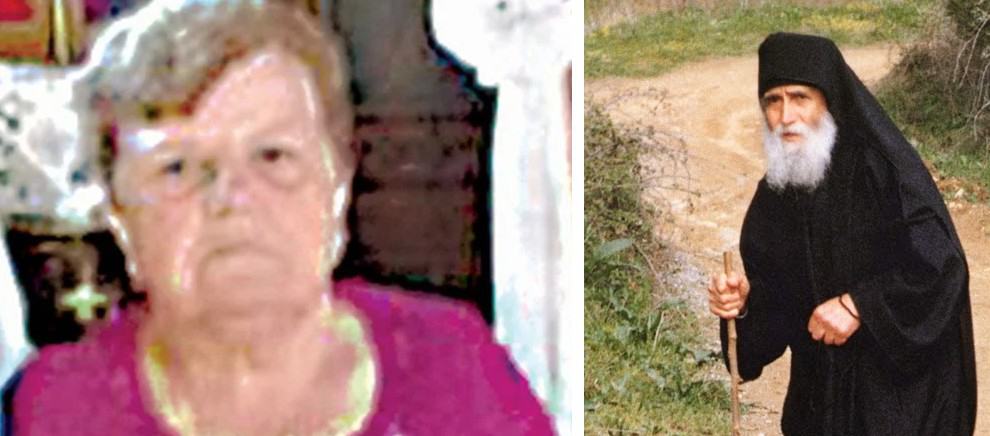Irini Mourelatou of the Eznepidis family, niece of Agios Paisios as she is the daughter of his sister Zoe, died at the age of 77 in the Kephalonia village of Lixouri.
The funeral will be held on Friday at 4 pm local time at the Church of the Holy Apostles in Chavdata, Lixouri.
She was especially beloved in the area and, as the locals pointed out, was a source of testimony for the Eznepidis family who came from Farasa in Cappadocia in today's Turkey, but especially for her uncle, Agios (Saint) Paisios, who after his canonisation, is now honoured on July 12.
This is shown in the photo, which is taken from the feast of the Saint in the Holy Church of Saint Spyridon Lixouri.

As her daughter, Pagona Mourelatou, told Proto Thema: "My grandmother Zoe chose to give 1945, the year of my mother's birth, the name Irene, to really bring peace, because those times were difficult."
The mother of Agios Paisios, Zoe, named him Arsenios Eznepidis after Saint Arsenios of Cappadocia. But what matters is the choice of that name as her mother, Evlogia, had lost two children before she was born.
So, when Zoe was born and it was time to be baptised, Saint Arsenios told her mother that he would give her the name Zoe, so that this child would live and not die. Indeed, that is what happened.
"My grandmother Zoe lived and gave birth to my mother Irene, who was symbolically named to bring peace at a time when the world was suffering from a brutal war," Pagona said.

Very shortly after his baptism the young Arsenios and his family were forced to leave Asia Minor in accordance with the 1923 Treaty of Lausanne.
St. Arsenios guided his flock along a 400-mile trek to Greece. The Eznepidis family finally settled in the town of Konitsa in Epirus in northwestern Greece.
As he had prophesied, St. Arsenios reposed forty days after the group settled in Greece, leaving, as his spiritual heir, the infant Arsenios. Arsenios grew up in Konitsa and learned carpentry after completing intermediate public school.
During the civil war in Greece following World War II, Arsenios served as a radio operator.
While concerned about his compatriots who had family, he didn’t worry for himself because he was single and had no children. He was noted for his bravery, self-sacrifice and moral righteousness.
After the civil war ended, he wanted to enter a monastic life but had to consider his sisters, who were as yet unmarried. By 1950, he had provided for his sisters’ future and was free to begin his monastic vocation.
He arrived on Mount Athos in 1950, first to Fr. Kyril, the future abbot of Koutloumousiou Monastery, and then to Esphigmenou Monastery. In 1954, Arsenios, having been a novice for four years, was tonsured a monk and was given the name Averkios.
He was a conscientious monk, finding ways to both complete his obediences (which required contact with others) and to preserve his silence, so as to progress in the art of prayer. He was always selfless in helping his brethren.
He was unwilling to rest while others worked (though he may have already completed his own obediences) as he loved his brothers greatly and without distinction.
In addition to his ascetic struggles and the common life in the monastery, he was spiritually enriched through the reading of soul-profiting books
In 1968, he resided at the Monastery of Stavronikita helping with its spiritual as well as material renovation.
While there he had the blessing of being in contact with the ascetic Elder Tikhon who lived in the Hermitage of the Holy Cross, near Stavronikita. Elder Paisios stayed by his side until his repose, serving him selflessly as his disciple.

It was during this period that Elder Tikhon clothed Fr. Paisios in the Great Schema. According to the wishes of the Elder, Fr. Paisios remained in Elder Tikhon’s hermitage after his repose.
Fr. Paisios stayed there until 1979, when he moved to his final home on the Holy Mountain, the hermitage Panagouda, which belongs to the Monastery of Koutloumousiou.
It was at Panagouda that Elder Paisios’ fame as a God-bearing elder grew, drawing to him the sick and suffering people of God. He received them all day long, dedicating the night to God in prayer, vigil, and spiritual struggle.
His regime of prayer and asceticism left him with only two or three hours each night for rest. The self-abandon with which he served God and his fellow man, his strictness with himself, the austerity of his regime, and his sensitive nature made him increasingly prone to sickness.
In addition to respiratory problems, in his later days, he suffered from a serious hernia that made life very painful.

When he was forced to leave the Holy Mountain for various reasons (often due to his illnesses) he would receive pilgrims for hours on end at the women’s monastery at Souroti.
The physical effort which this entailed in his weakened state caused him such pain that he would turn pale. He bore his suffering with much grace, confident that, as God knows what is best for us, it could not be otherwise.
He would say that God is greatly touched when someone who is in great suffering does not complain, but rather uses his energy to pray for others.
In addition to his other illnesses, he suffered from haemorrhaging which left him very weak.
In his final weeks before leaving the Holy Mountain, he would often fall unconscious. On October 5, 1993, the Elder left his beloved Holy Mountain for the last time. Though he had planned on being off the mountain for just a few days, while in Thessaloniki he was diagnosed with cancer that needed immediate treatment.
After the operation, he spent some time recovering in the hospital and was then transferred to the monastery at Souroti. Despite his critical state, he received people, listening to their sorrows and counselling them.
After his operation, Elder Paisios had his heart set on returning to Mt. Athos. His attempts to do so, however, were hindered by his failing health. His last days were full of suffering, but also of the joy of the martyrs.
On July 11, 1994, he received Holy Communion for the last time. The next day, Elder Paisios gave his soul into God’s keeping.
He was buried, according to his wishes, at the Monastery of St John the Theologian in Souroti, where yesterday and today thousands upon thousands of people have gathered to pay their respects.
Elder Paisios, perhaps more than any other contemporary elder, captured the minds and hearts of the Greek people.
Many books of his counsels have been published, and the monastery at Souroti has undertaken a great work, organising the Elder’s writings and counsels into impressive volumes befitting his memory. Thousands of pilgrims visit his tomb each year.
Elder Paisios was glorified on January 13, 2015, by the Holy and Sacred Synod of the Ecumenical Patriarchate of Constantinople. He is commemorated each year on July 12.
READ MORE: May 21 Feast Day: Agios Konstantinos and Agia Eleni.


